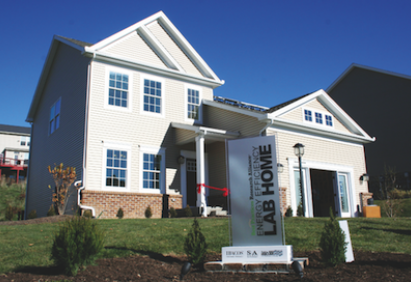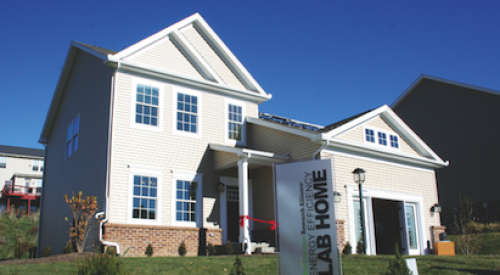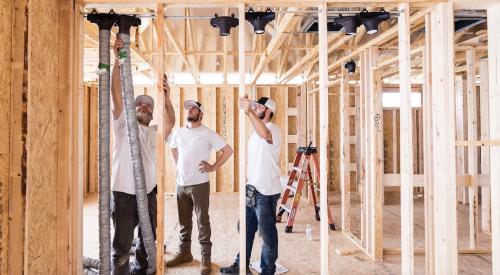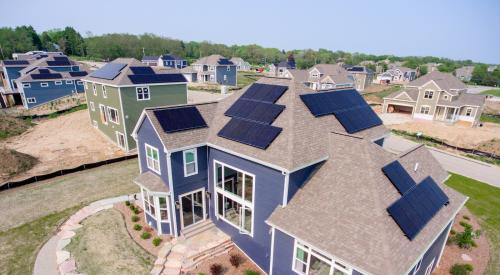In November 2010, the Best Practices Research Alliance cut the ribbon on its Energy Efficiency Lab Home outside Pittsburgh. A collaborative research-based community focused on improving the quality and performance of homes, the Alliance was founded by IBACOS, a building science consulting firm and team leader for the Department of Energy’s Building America program.
The lab home is part of an ongoing effort by IBACOS and its Alliance to test methods and materials that will make net-zero-energy homes affordable for production home builders to build and the average home buyer to purchase.
The 2,700-square-foot lab home, which will stay unoccupied for three years while testing continues, features a super-insulated enclosure, a ground-source heat pump system, three different HVAC distribution systems, a high-efficiency lighting system, and solar panels. The lab home project team, which was headed by me and central Pennsylvania home builder S&A Homes, found out first-hand about the obstacles likely to crop up during the construction of a zero-energy home like the lab home.
What follows are 10 lessons learned from the project. For more on the lab home, visit: www.theresearchalliance.org/lab-home.aspx.
1. Design with production in mind
For high-performance homes to be widely available, production builders have to be able to build them at a reasonable price.
“Our goal as a builder is to maximize energy efficiency without creating price barriers for future homeowners,” says Chris Schoonmaker, VP of S&A Homes. That’s why the lab home was designed with off-the-shelf products and processes that production builders either already know of and use or could adopt and modify to fit within their existing infrastructure.
Reed Kneale, VP of operations with O.C. Cluss Lumber and Building Supplies, which produced and assembled the lab home framing, says one key to gaining his employees’ acceptance for some of the new methods and materials used was sticking to production-minded processes. “I can attest it was real-world techniques, on steroids,” he said.













